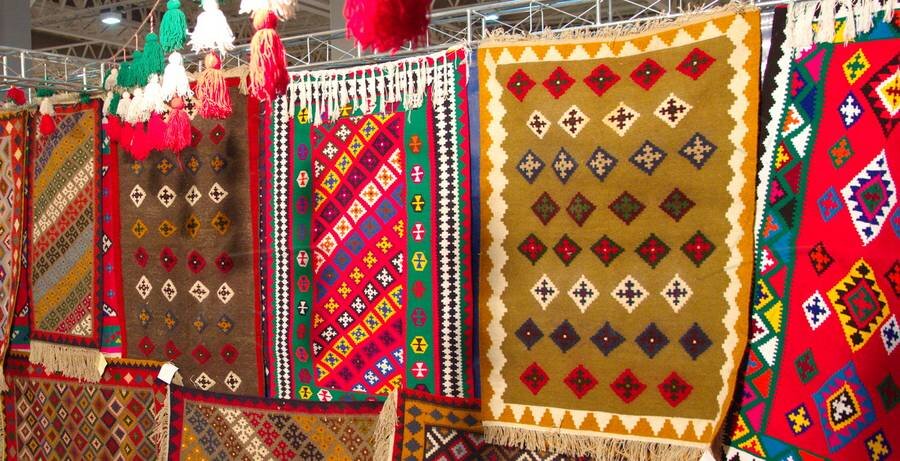Iran (IMNA) - Based on historical documents traditional textiles have long been one of the most common crafts of people in Qazvin, especially during the 12th and 13th century. Even though it has declined significantly within last decades, it has not faded and is practiced by many artists.
In other words during autumn and winter when villager women are not occupied with agriculture, they install smaller looms of Kelim in their houses and sell their products to tourists or Iran Cultural Heritage, Handcraft and Tourism Organization offices. In terms of design, patterns, colors, dyeing and material, Kelims of Qazvin are quite particular. Cotton yarns are used as wraps and wool yarns as wefts.

In this region, herbal or chemical pigments are used to dye the yarns. Herbal pigments are produced from walnut skin, skin of pomegranates, apples, damask rose, madder and some other plants. Color used to produce Kelims include dark brown, red, cream, orange, blue and green. Some of the patterns are “Moharramat”, “Toranjdar” (paisley) and “Vagirehee”. Geometric motifs are most common and floral motifs are occasionally used.
Generally three kinds of Kelims are woven in Qazvin. “Chakdar”, “Poudehpichi” and “Monhani” are produced in the province, but Alamut and Ardak are its most important centers. The style of Ardak Kelims is described as Monhani and the style of Alamut as Poudpichi. In style of Poudpichi, the wefts are attached to each other while the Kelim is being woven, and designs and patterns are geometric. One of the most important differences between Ardak and Alamut Kelims are the asymmetrical patterns.
The other is the curved and distorted lines and patterns of Arak Kelims that look like waves. The spontaneity of the designs that are created from memory has made it impossible to copy a Qazvin Kelim. Since Alamut Kelims have geometric and regular design, they can be copied by the hands of any skillful weaver. Whereas weaving an Ardak Kelim requires the knowledge of the traditional weavers of Qazvin.

Visit Iran


Your Comment